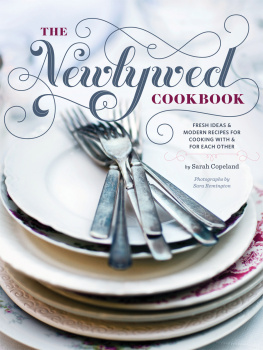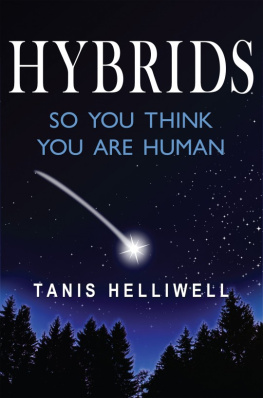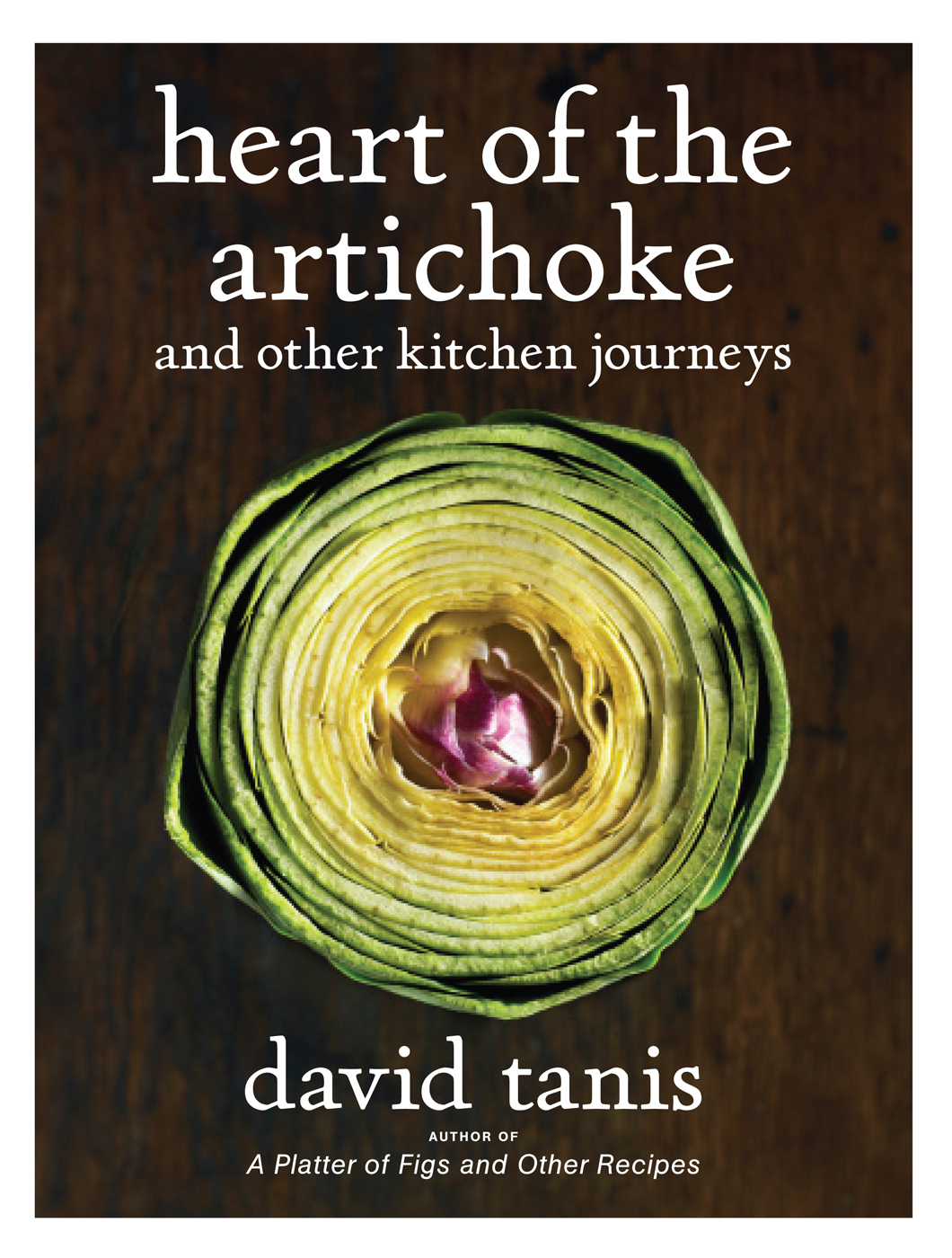
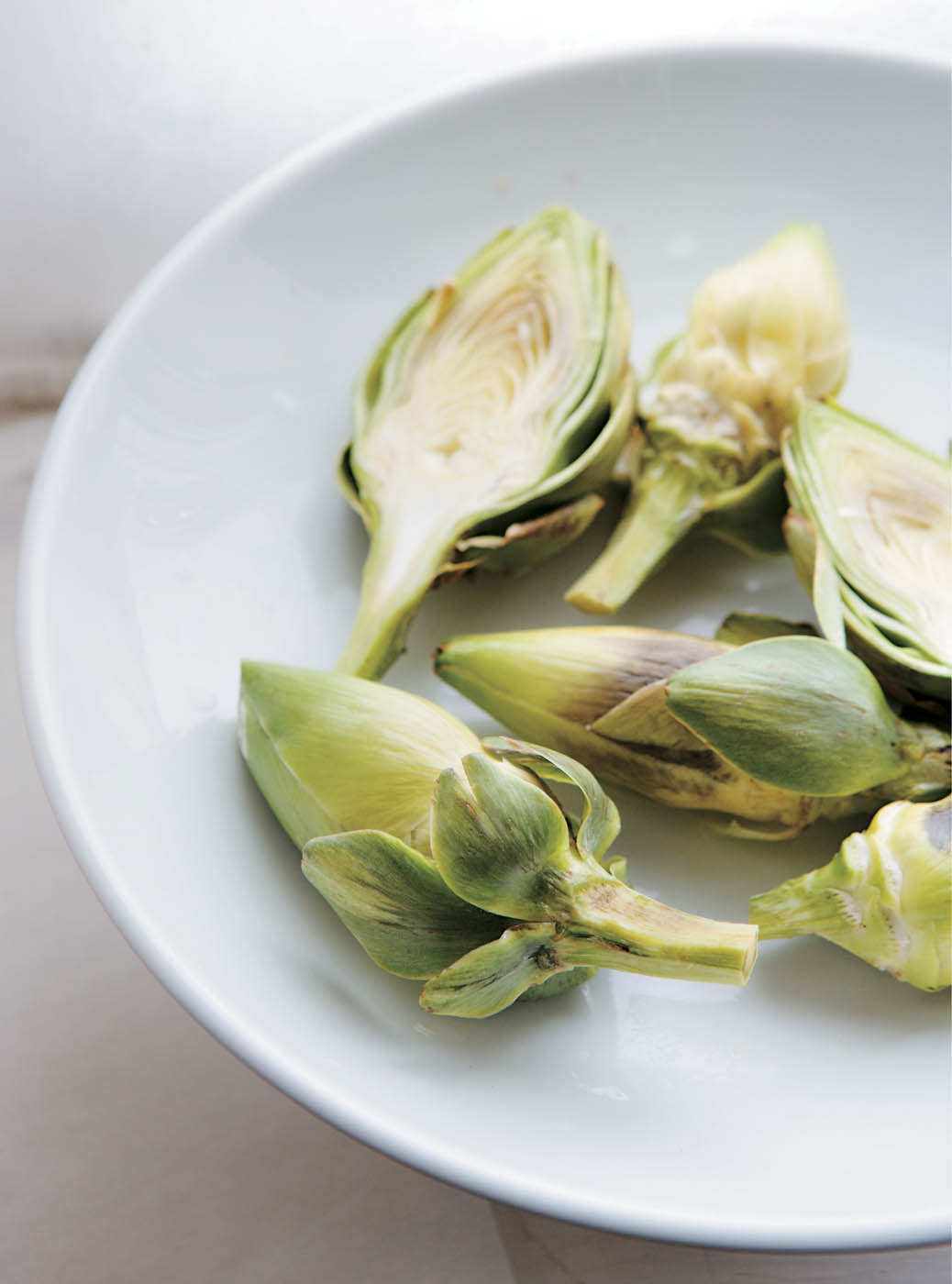
heart of the artichoke
and other kitchen journeys
david tanis
photographs by christopher hirsheimer

artisan
new york
Contents
A Little Disclaimer
Despite the title, this is not a book about artichokes. Or rather, it is and it isnt. There are some artichoke recipes within, though not terribly many.
What is an artichoke anyway? An unusual yet common vegetable that has been around for a very long time. We call it a vegetable, but actually it is the flower bud of a thistle. And I mean, really, who would ever think to eat a thistle? But there it is, and people have, for millennia.
The artichoke is ripe with metaphor and parable possibilities. Getting past the thorns to the sweet center, all of that. Not at all like reaching up and harvesting a sweet peach, eating an artichoke requires a bit of work.
For those willing to take the journey, the delicious heart is the prize at the end of the trail.

The Cuisine in My Head
Im a restaurant chef who has always preferred to cook at home. Fortunately, the restaurant where I work, Chez Panisse, specializes in a cuisine that emulates the best of home cooking. In the downstairs dining room, a single menu is served nightly, changing with whims of the seasons and the weather and the availability of produce. So every day I get to design a menu quite similar to the kind of food I also cook at homerelatively simple dishes, somewhat traditional, fresh, clean, gutsy.
Still, I am happiest in my own home kitchen, and I like nothing better than gathering friends and family together for a meal.
A lot of people seem to be cooking and eating at home more these days, for different reasons. I view this as a good sign. Im especially encouraged to see a new generation of cooks getting excited about home cooking, gardening, the seasonal approach, and the pleasures of the table. Food brings us together, nourishes us both literally and figuratively: time at the table is time well spent. Cooking for others is a generous and civilized act, even if its just a simple pot of beans.
About This Book
In Heart of the Artichoke, there are three kinds of cookingsmall, medium, and large.
In the first section, Kitchen Rituals, I offer a quirky collection of small cooking moments. Its nice sometimes to cook only for oneself, or to make a small meal to share with a close companion. There are also times when a little kitchen project can be an enjoyable private endeavor. Some of the other rituals I describe are not so much about cooking as they are about savoring a food experience, whether its eating tapas in Seville or oatmeal in Ohio.
Think of the seasonal menus that comprise the core of this book as medium-size cooking, meals for family and friends. These are menus for groups of 4 to 6. Most of them are easy to prepare, though some require some advance planning. Some are more appropriate for a weekend meal; all are satisfying and eminently doable.
Finally, Simple Feasts for a Long Table, the chapter that ends the book, is about cooking large. These are menus for festive occasions. I find that for many people the leap from a small dinner party to a large onefor, say, 12 or 20is pretty terrifying, but it neednt be. It may be a big table, but it doesnt have to be a big deal.
My style is to make menus that arent terribly formal anyway, and in this book, I give some examples of utter informality. People dont always think in terms of three-course meals. This is fine! Theres nothing wrong with having the table laden with food and just sitting down. All meals do not need to be served in courses. Sometimes a plate of potato salad and a cold beer is the meal, and sometimes a meal must be much more than that.
Time and the Cook
Also, you'll find that I have a lot to say about dishes that call for that elusive ingredient, time. I ask you to get your hands in the dough and to cultivate patience. Mesmerized by television shows hyping the thirty-minute meal and the blood sport of competitive cooking, we have somehow forgotten the pleasure of giving ourselves over to the true kitchen experience. This doesnt mean spending hours and hours in the kitchen. Its not more difficult cooking, but a different way of engaging with food. What matters is the joy that makes you part of a cooking continuum from beginning to end. It becomes a real journey. That journey is at the heart of Artichoke.
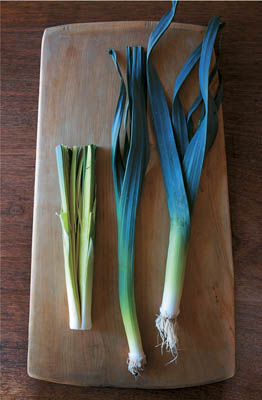
Regarding Kitchen Tools
People whove watched me cook, especially at home, say my hands are my two favorite tools. I do like to handle the food I cook, and I rely on just a few appliances and gadgets. I always say that a kitchen requires only fire, water, a worktable, and a sharp knife. A good vegetable peeler is handy, though, for things like potatoes. I like the French name for this toollconomewhich means it takes off the peel in an economical way, leaving as much of the carrot behind as possible.
A good mortar and pestle is a fine tool; its old-fashioned, efficient, good for pounding garlic, spices, or herbsor all three together, such as the seasonings to rub on a piece of pork (fennel seed, black peppercorns, garlic, sage, and rosemary, all pounded to a paste). I probably have a dozen tools for pounding, from the traditional Italian marble mortar to the Japanese suribachi and the deep ceramic mortars used in Thailand.
I know that many cooks rely on a food processor, but I am not much for electrical appliances. I make an exception for the blender, which is extremely useful for pureeing soups and salsas. Otherwise, give me a knife, a wooden spoon, and a cast-iron pan.
Something Sweet at the End of a Meal
I dont ever want a big, aggressive cake or pie or pastry after a good dinner. The old custom of taking sweets in the afternoon seems to me much more appropriate. And it makes senseyou get hungry and a little tired in the afternoon, and dinner is still a few hours away.
I like fruit after a meal. I love a bowl of tangerines, or plums, or grapes. If Im serving a sweet at all, Im inclined to have it be a little something along the lines of what used to be called sweetmeatscandied ginger or a single glaced chestnut. I like the idea of a plate of small sweets, or dried fruits, or candied citrus peel, or Asian bean sweets, or small portions of those intensely sweet Middle Eastern desserts. A little bowl of ice cream or sherbet. Yogurt with honey or good jam is better for dessert than for breakfast. And I profess a great fondness for cookies, but not giant cookies, and not chocolate chip, and not oatmeal. Yet there are exceptions to all of these prejudices.
Good Ingredients
Pure and healthy ingredients are essential to good cooking. I encourage all cooks to do the best they can in this regard. The rewards are evident, both in flavor and in the effect on the environment. We owe our children and future generations a commitment to sustainable farming, and we affirm that commitment each time we prepare food with good ingredients.
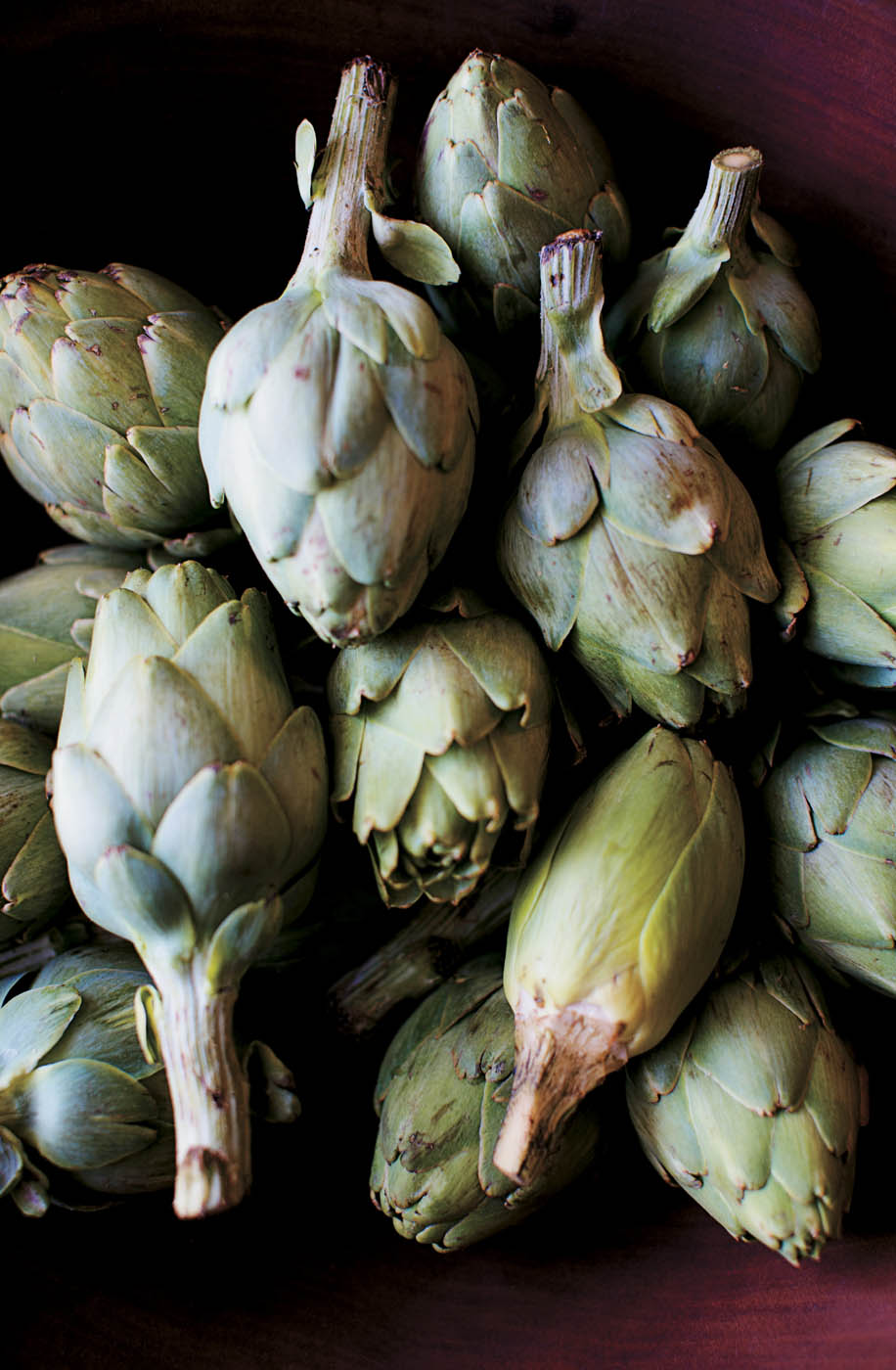
Next page

